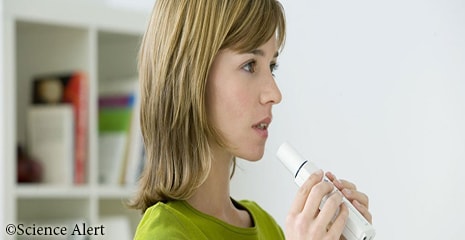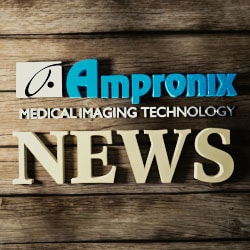Breath sensor, powered by artificial intelligence, could be secret weapon to early diagnosis
Orange County, CA - January 12th 2017 - Through breath one can determine a lot of information about an individual’s health. Dating as far back as 400 B.C., physicians used to smell breath to gather information about patient afflictions. The aromas of different diseases are caused by varying levels of volatile organic compounds in patient mouths. Using them as biomarkers, researchers from Technion−Israel Institute of Technology were able to develop a breathalyzer able to do an assortment of tasks other than determining blood alcohol content.
Named the Na-Nose, the device is able to detect 17 different diseases, including multiple cancers and two types of Parkinson’s, through analyzing levels of volatile organic compounds in a person’s breath. These compounds are emitted as a result of the disease’s maturation into the bloodstream. Their high vapor pressure requires expension from the body through means of urine, feces, skin, or breath. While these other methods in detection of the compounds exist, breath is the least invasive as well as inexpensive.
Researchers developed an array of gold nanoscale sensors to detect the individual biomarkers in the mouth and then collected breath samples from 1404 participants. Of the participants, 813 had one of the 17 different diseases, compared to the 591 control group individuals who had none. Using mass spectrometry the team identified unique breath components in each disease. After analyzing the results with artificial intelligence software, the array was able to help organize and identify each condition. The breathalyzer is not deterred by the presence of multiple diseases, for it has the ability to detect a multitude of health descrepancies in the same screening.

Though still in the testing phase, the diagnostic accuracy of the system reached 86%. Although not accurate enough for clinical diagnosis, further research could constitute the method into routine testing in discovering disease. With this technology, physicians will be able to predict disease development in seemingly healthy individuals. Scientists hope the device will be able to increase the survival rate in lung cancer patients from 10% to 70% as a result of early diagnosis.
The device is applicable to several applications and has already been licensed for the project Sniffphone, which will integrate the technology into smartphones. Supported by the European Commission through the Horizon 2020 ICT program, the phone will analyze exhalations through talking and accurate results.
Lead researcher, Professor Hossam Haick has said the approach is important because anyone with a smartphone could potentially save their life.
To read more on their study click here.
Contact Ampronix:

Email: info@ampronix.com
International Sales: +1 949-273-8000
Domestic Sales: 1800-400-7972 for US and Canada
Follow Us:
Share This Article:
View our Product Catalog Online Here
About Ampronix
Ampronix is a renowned authorized master distributor of the medical industry's top brands as well as a world-class manufacturer of innovative technology. Since 1982, Ampronix has been dedicated to meeting the growing needs of the medical community with its extensive product knowledge, outstanding service, and state-of-the-art repair facility. Ampronix prides itself on its ability to offer tailored, one-stop solutions at a faster and more cost-effective rate than other manufacturers. Ampronix is an ISO & ANSI/ESD certified facility. To learn more go here.
Breath sensor, powered by artificial intelligence, could be secret weapon to early diagnosis Orange County, CA – January 12th 2017 – Through breath one can determine a lot of information about an individual’s health. Dating as far back as 400 B.C., physicians used to smell breath to gather information about patient afflictions. The aromas of different diseases […]



